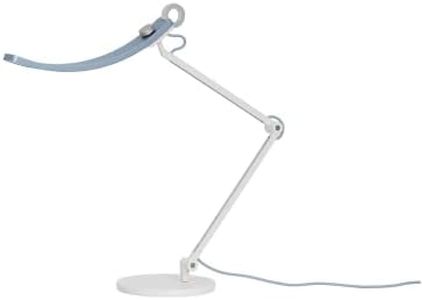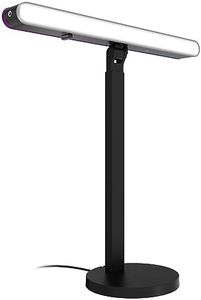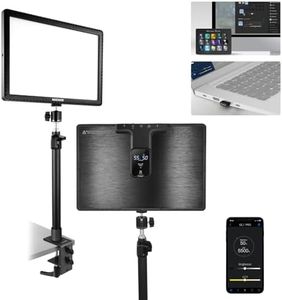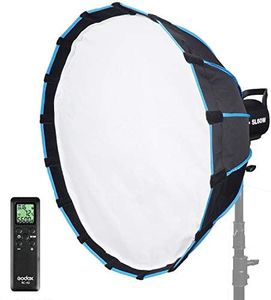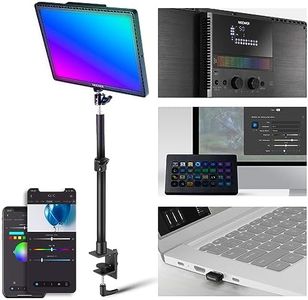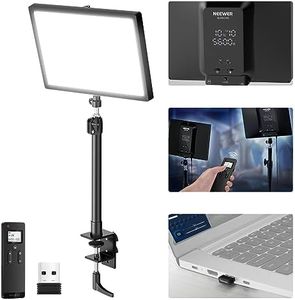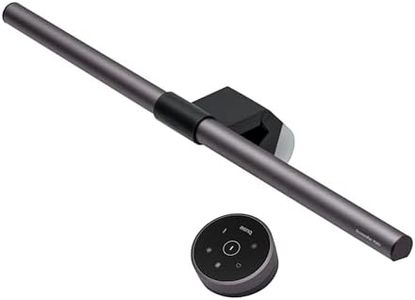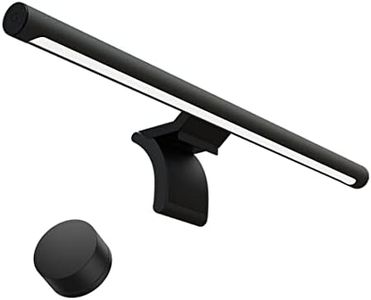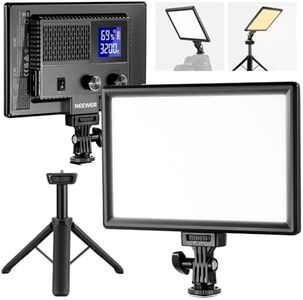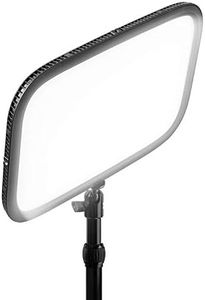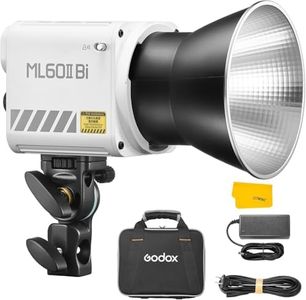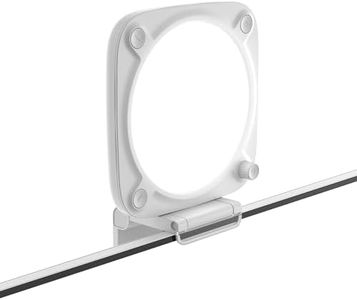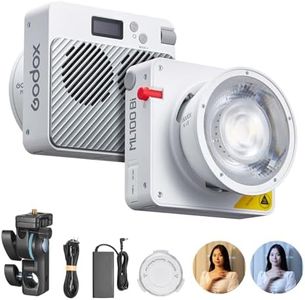We Use CookiesWe use cookies to enhance the security, performance,
functionality and for analytical and promotional activities. By continuing to browse this site you
are agreeing to our privacy policy
10 Best Desk Light For Streaming
From leading brands and best sellers available on the web.Buying Guide for the Best Desk Light For Streaming
Choosing a desk light for streaming is all about making sure you look your best on camera and your workspace feels comfortable for long sessions. The right desk light can reduce shadows on your face, provide flattering illumination, and help minimize eye strain. Consider where you'll place the light, how much space you have, and how long you'll be using it each time you stream. Thinking about these things will help you make a choice that enhances both your appearance and your overall comfort.BrightnessBrightness refers to how much light the lamp can produce, usually measured in lumens. For streaming, you’ll want enough brightness to clearly illuminate your face and desk without creating harsh shadows or glare. Desk lights range from low (under 300 lumens) to medium (300-600 lumens), and high (over 600 lumens) output. If you stream in a well-lit room or only need a small boost, lower brightness may be fine. For darker spaces or if your camera struggles in low light, aim for higher brightness. Many lights have adjustable brightness, which is ideal so you can tune it based on the time of day and your needs.
Color TemperatureColor temperature, measured in Kelvins (K), affects whether the light appears warm (yellow), neutral, or cool (blue-white). Warm lighting (2500-3500K) gives a cozy feel but can make skin tones look orange. Neutral (3500-4500K) balances warmth and clarity. Cool lighting (4500-6500K) is bright and crisp, often preferred for streaming as it enhances skin tones and video clarity. Lights that allow you to adjust color temperature are ideal because you can adapt to different times of day or match your room’s existing lights, helping you look more natural on camera.
DiffusionDiffusion is about how soft or harsh the light is on your face. With good diffusion, the lamp spreads light evenly, reducing harsh shadows and reflections. Some desk lights come with built-in diffusers (like a frosted cover or fabric panel) that make the light softer, while others are more direct and can create sharp shadows. For streaming, softer diffused light is almost always better, as it gives a flattering look and is easier on your eyes. If your setup looks too harsh, go for a model with good diffusion.
Adjustability and PositioningAdjustability refers to how easily you can change the angle, height, and direction of the light. Some lamps have flexible goosenecks, swivel heads, or adjustable arms. This matters as it allows you to direct the light exactly where you want it—on your face, on your desk, or away from reflective surfaces. If your desk is small or crowded, a clamp or articulating arm can help save space. Think about where you want the light to hit and choose a lamp that matches your workspace setup.
Control OptionsControl options are how you turn the light on or off and adjust its settings. Some lights use simple switches, while others have touch controls, remote controls, or app connectivity. If you want to make adjustments quickly during a stream, touch or remote controls are very handy. Dimmable lights or smart controls also allow you to fine-tune the lighting without leaving your seat, which can be a major convenience if you stream frequently.
Power SourceDesk lights can be powered by USB, batteries, or traditional wall plugs. USB-powered lights are convenient if you want portability or have limited outlets—they can run off your computer or power bank. Battery-powered options are cable-free but may require frequent charging. Plug-in lights offer the most consistent power, ideal for long streaming sessions. Consider how you set up your streaming area and pick a power source that keeps your space tidy and fits your habits.

